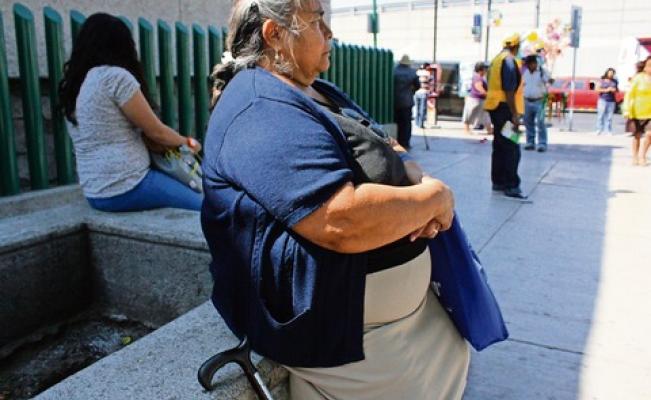
Collectives such as childhood, but there are other groups such as the elderly in which this pathology becomes more harmful if possible.
Obesity is not just synonymous with a high body weight. The concept of obesity requires that this excess weight occurs at the expense of fat tissue, and not other body tissues such as muscle or bone. In clinical terms obesity is defined as a body mass index (BMI: the result of dividing the weight, in kilograms, between the squared height, in meters) greater than 30 kg / m2.
In fragile elderly it is preferable to maintain a BMI between 24 and 29 kg / m2, because lower figures are associated with a higher risk of death in these subjects.
Obesity is considered when the waist circumference is higher than 102 centimeters in men and 88 centimeters in women. In Spain it is estimated that 35.5% of men and more than 40% of women over 60 have obesity. This is due to sedentary lifestyle and increased availability of food with high caloric load.
Obesity does not only mean that there is a high weight but it speaks of a body mass index greater than 30 kg / m2. In elderly people, special attention must be paid to the obesity that accumulates in the abdominal area, since it favors cardiovascular risks.

Associated diseases
Obesity favors the appearance of diabetes, high blood pressure and cholesterol elevation. It is also related to the syndrome of sleep apnea, stomach reflux and venous insufficiency, among other complications.
In elderly people a high overweight can lead to immobility. With age, muscle tissue weakens and does not have the necessary strength if there is an excess of body weight.
What measures to take
For the prevention of obesity it is necessary to promote healthy lifestyles among the elderly:
Bring a daily light exercise routine tailored to your abilities. In immobile people it is advisable to carry out progressive resistance training to maintain the mobility of the muscles.
Follow a diet rich in vegetables, fruit and cereals. It is essential to reduce or completely avoid saturated fats and refined sugars.
Consult periodically with your doctor to monitor the evolution of body mass and take appropriate measures to follow.
Clinical studies have defined that the increase in weight in elderly people is due more to a decrease in exercise or physical activity than to an increase in the amount of calories consumed.
This could be due to the fact that the body, over the years, undergoes a series of physiological changes that are directly related to the cell aging process and with a tendency to lead a more sedentary life. Among other aspects, it diminishes the water of the body and the sensation of thirst, generating a risk of involuntary dehydration.
With age, also problems of vision and smell appear, which makes food less attractive, if to this is added the loss of the taste buds and the difficulties to chew and swallow, the elderly are leaving aside their food.

Older adults are not exempt from being overweight or obese. We can say that it is the part of the population that is most vulnerable to this pathology, due to sedentary lifestyle.
The elderly are much more delicate and therefore the problems of nutrition and obesity in this area deserve special attention.
Over the years, weight tends to increase and muscle mass decrease, especially if we maintain a sedentary lifestyle. That is, with age, muscle tissue weakens. This means that if there is an excess of body weight, the person does not have enough strength to stand.
Apart from the diseases associated with obesity in both sexes, there are also others that only affect according to sex, that is, women or men.
if you want to know more information visit our social networks @adultcounselingcenter99
Leave a reply










Leave a reply